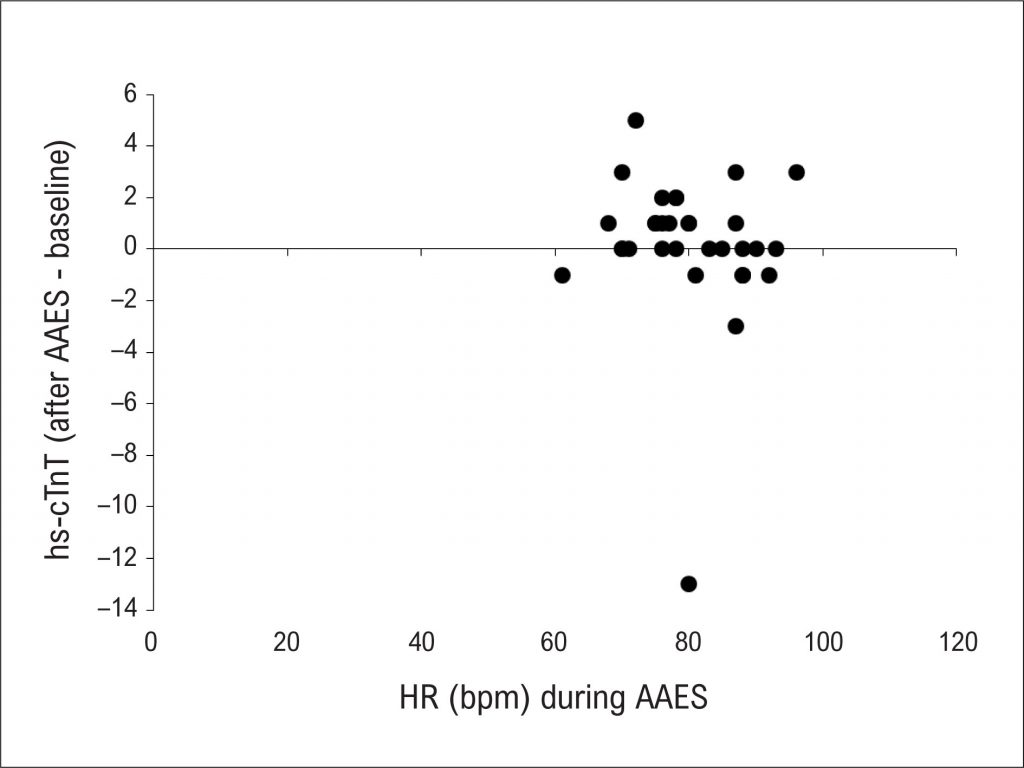Arq. Bras. Cardiol. 2022; 119(5): 747-753
Does Myocardial Injury Occur After an Acute Aerobic Exercise Session in Patients with Refractory Angina?
This Original Article is referred by the Short Editorial "Refractory Angina Referral to Cardiovascular Rehabilitation: A Neglected Patient".
Abstract
Background:
It is unclear whether exercise is safe in patients with more advanced forms of coronary artery disease, such as those with refractory angina (RA).
Objective:
We aimed to determine the effect of an acute aerobic exercise session (AAES) on high-sensitivity cardiac troponin T (hs-cTnT) levels in patients with RA.
Methods:
This was a longitudinal, non-randomized, and non-controlled clinical study. Participants were recruited from April 2015 to January 2019. On a visual pain scale from 0 to 10, pain rated up to 3 was considered as the top level allowed to continue exercising. We assessed hs-cTnT at baseline and 3 hours after the AAES. The protocol consisted of 5 minutes of warm-up, 30 minutes of continuous aerobic exercise at heart rate corresponding to the anaerobic threshold or angina threshold obtained in the cardiopulmonary exercise testing, and 5 minutes of cooling down. P values less than 0.05 were considered statistically significant.
Results:
Thirty-two patients with RA were included (61 ± 9 years, 59.4% male). The baseline hs-cTnT concentration was 10.9 ng/L (95% confidence interval: 9.1 to 13.0 ng/L). The hs-cTnT collected 3 hours after the AAES was 11.1 ng/L (95% confidence interval: 9.1 to 13.5 ng/L). No difference occurred in hs-cTnT before and after AAES (p = 0.657).
Conclusions:
A single AAES performed at the angina threshold with corresponding visual pain scale did not alter hs-cTnT in patients with RA, suggesting that no significant myocardial injury was elicited by exercising and that this exercise protocol can be considered safe.
Keywords: Angina Pectoris; Biomarkers; Exercise; Physical Exercise; Troponin
762

